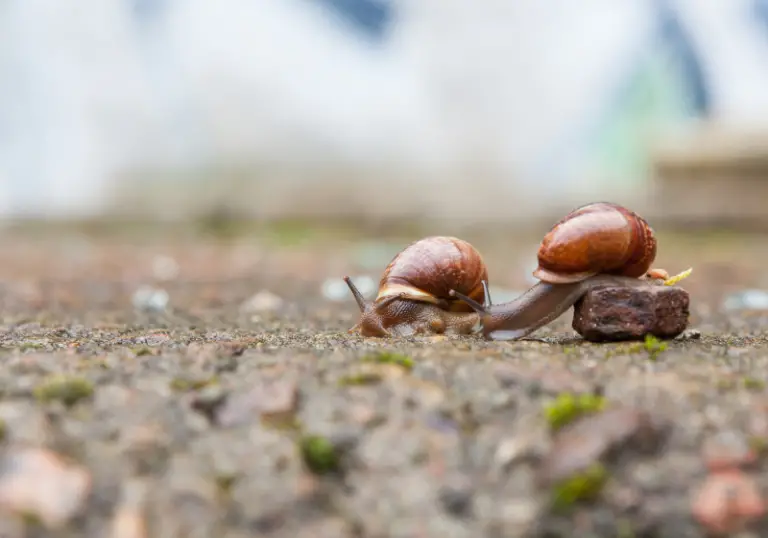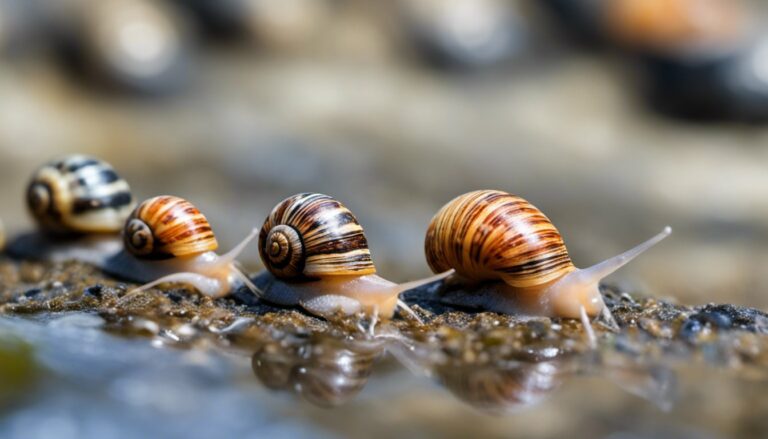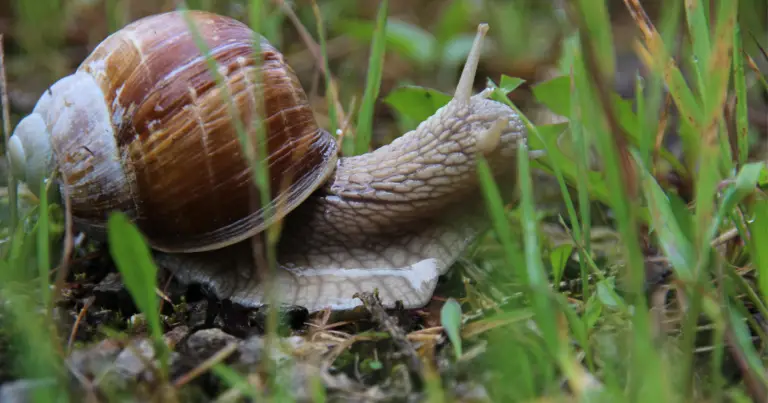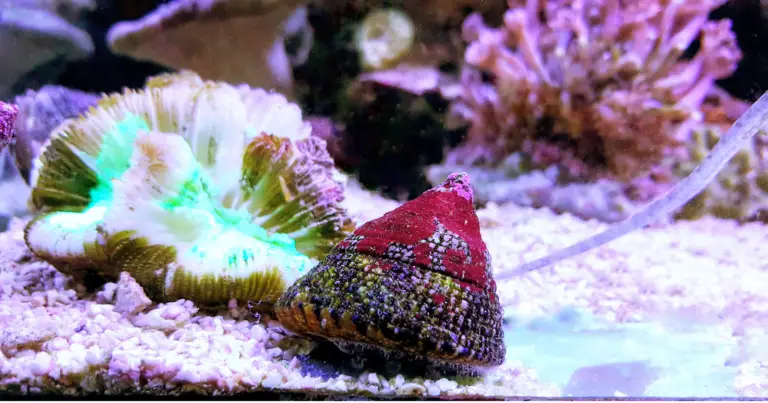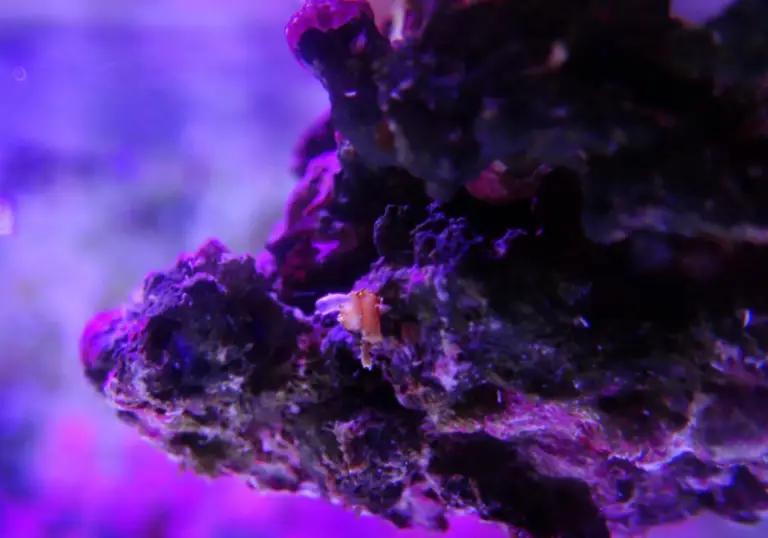Why Are There Snails on My House? Uncovering the Causes and Solutions
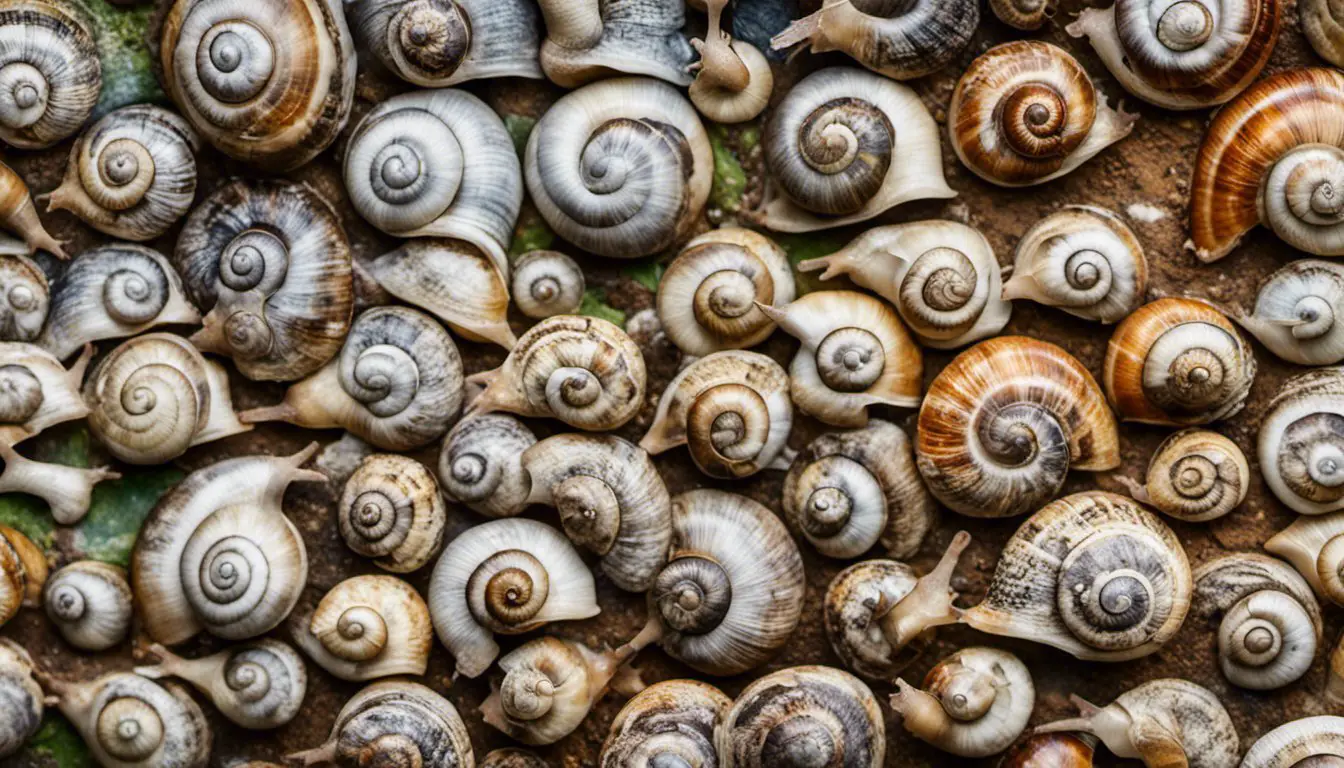
Have you ever wondered, Why Are There Snails on My House? This is a common occurrence for many homeowners, and understanding the reasons behind it can help you address any potential problems that it may present. Like any other living creature, snails have specific needs and behaviors that drive their actions.

One of the main reasons snails climb your house is to find moisture. As living beings, snails require hydration to survive and avoid dehydration at all costs. Without the necessary moisture in their system, they can’t produce the mucus needed for mobility. Snails are also sensitive to the weather and tend to climb walls to cope with changing temperatures or escape the cold.
In addition to seeking moisture and ideal temperatures, snails might enter your house in search of nutrition, mainly in the form of mold derived from moisture and humid conditions 5. Climate and food availability are some of the main factors influencing the presence of snails on your house.
Contents
Table of Contents
Exploring the Presence of Snails

Snails and Their Natural Habitat
Snails thrive in dark, moist, and abundant vegetation environments. If you find them on your house, you likely live in a humid climate or a place where it has recently rained. Snails often seek shelter in damp areas such as gardens, long grass, or underneath rocks to retain moisture and protect themselves from dehydration.
Characteristics and Behavior of Snails
One of the key features of snails is the protective shell on their backs. This shell is composed of calcium, which helps provide support and safety against predators. Snails produce mucus to move around, allowing them to glide on surfaces, leaving a slimy trail behind them.
To remain hydrated, snails require moist environments. Consequently, dehydration can be a significant issue for them as it hinders their ability to produce the mucus necessary for their mobility. To escape the sun and heat during the day, snails often hide in shaded, damp locations and emerge at night to feed on plants.
Different Species of Snails
Numerous species of snails vary in size, color, and shell patterns. However, the majority of them share similar characteristics and habitat preferences. Regardless of the species, snails are essential in maintaining the ecosystem, feeding on decaying materials, and providing a food source for various predators. Taking appropriate measures to manage their presence and protect your house can help ensure a more balanced environment.
Why Snails are Attracted to Your Home

Understanding Snail Diet
Snails are primarily attracted to your home because of their diet. They feed on various organic materials present in your garden, such as leaves and other plant parts. It’s not uncommon for snails to follow the scent of their food sources, leading them to enter your house. In particular, they may be drawn to your kitchen, where the smell of vegetables and other food items can be strong.
Environment and Shelter Preferences of Snails
Another crucial factor in attracting snails to your home is their preference for a specific environment. Snails thrive in dark, damp conditions, retaining moisture and providing adequate protection against predators. High humidity levels and a consistent temperature are also vital elements that help snails maintain their overall well-being.
Your home may unintentionally provide the right combination of environment and shelter for these creatures, especially in areas where damp conditions prevail, such as basements or poorly ventilated rooms. Maintaining low humidity levels and proper ventilation in these spaces can help ward off snail infestations in your house.
Consequences of Snails on Your House

Structural Damage Caused by Snails
While snails are not typically known for causing major structural damage to homes, they can still contribute to minor issues due to their preference for moist environments. Moisture around the foundation of your house can lead to wood rot in the wooden parts of your home over time, like windows and doors.
Snails, attracted to the moisture, leave a slimy trail as they move, which can cause debris to stick to your home’s surfaces.
Additionally, excess humidity around your house caused by snails can lead to mold growth. This may deteriorate wooden structures even faster and can also pose health risks, which will be discussed in the next section.
Health Risks Associated with Snails
While it’s true that most snails carry minimal direct health risks, the conditions they create around your home by seeking out moist areas can still cause several indirect health concerns. As mentioned, snails contribute to mold growth by increasing your house’s moisture level. Mold, in turn, can trigger respiratory issues, allergies, and asthma, especially in people who are sensitive to these health concerns.
Furthermore, snails may attract rodents that come to feed on them, potentially leading to an infestation in your home. These rodents can cause significant damage to your home and bring additional health risks in the form of transmitted diseases and contaminated food.
To protect your home from the consequences of snails, it’s important to maintain and control moisture levels around the foundation, windows, and doors. Regularly cleaning and removing debris will also help keep snails at bay and reduce the potential for related health risks and structural damage.
Dealing with the Snail Problem
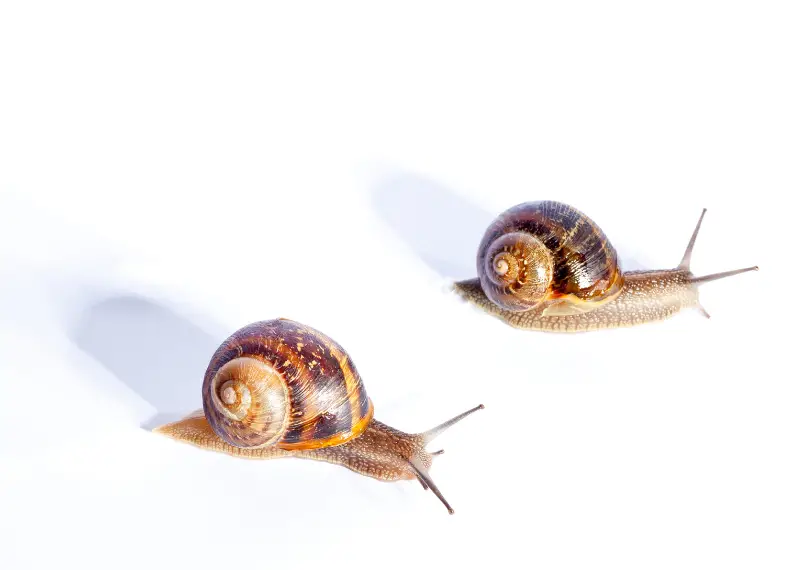
Preventative Measures
To effectively deal with snails on your house, taking some preventative measures is essential. Start by sealing any gaps and cracks on the exterior of your house. These could serve as potential entry points for snails seeking shelter. Additionally, maintain a clean and tidy garden to reduce hiding spots for snails, especially in areas where you grow your produce.
Another effective technique is to create barriers around your garden or home’s foundation. Consider installing copper tape or a diatomaceous earth barrier to repel snails, as they dislike the sensation of crawling over these surfaces.
Natural and Chemical Pest Control Methods
There are several natural and chemical methods to control snail populations. One common method is to use salt, which can be sprinkled around your home’s exterior or on snail-infested areas. However, be cautious, as excessive salt can harm your plants and soil.
Alternatively, you can use baits containing iron phosphate, a safer and eco-friendly option suitable for use around your garden. Other options include slug and snail traps filled with beer or a sugar and yeast solution, which attract and trap the pests. In more severe cases, professional pest control services can provide more advanced solutions to get rid of the snail problem.
Safe Handling of Snails
When handling snails, it is essential to prioritize safety. Always wear gloves to protect yourself from potential dangers, such as accidental ingestion of snail-borne parasites. Dispose of the snails in a responsible manner, and if necessary, consult with local wildlife authorities for guidance.
By taking these measures and utilizing the appropriate combination of preventative methods and pest control techniques, you can effectively address the issue of snails on your house without causing harm to the environment or your property.
How to Get Rid of Snails (4 Easy Steps)
Snails in the Garden
Impact of Snails on Garden
Snails can have a significant impact on your garden as they munch on a variety of plants. Vegetables like lettuce and spinach are common targets, while herbs like basil and beans are not spared. Apart from damaging your vegetables and herbs, snails can also consume algae, moss, and decaying organic matter present in the garden’s soil. This means that they can affect the overall health of your soil.
Additionally, snails’ feeding habits can reduce the aesthetic appeal of your garden by chomping on flowers and damaging the leaves and stems of your plants. When present in large numbers, snails can even threaten your crops.
Snail-Proofing the Garden
You need to adopt some effective measures to protect your garden from snails. One simple yet effective approach is to reduce the snails’ access to water sources. Snails require moisture to survive, and eliminating their access to water can make your garden less appealing to them.
Smearing Vaseline around the rim and base of pots for potted plants can prevent snails from crossing the barrier and reaching your favorite plants. Similarly, using a metal collar around plant stems can stop snails in their tracks, as they find it challenging to cross the metal barrier.
Incorporate these snail-proofing strategies into your gardening routine to reduce the impact of snails on your garden and maintain the health of your plants.
Interactions of Snails with Other Species

Snails as Prey
Snails and their close relative, the slug, are important prey for various predators in the ecosystem. Among the most common predators of snails are birds, who find these mollusks’ high-protein and calcium-rich content to be a nutritious meal. Insects, such as beetles and amphibians like salamanders and toads, also feed on snails as a part of their diet.
Reptiles, including turtles, also use snails as a food source. These animals rely on the abundance of snails that can be found near sources of food and moisture. For gardeners and homeowners, it’s essential to understand that the presence of snails can increase the number of predators visiting their yards, which could potentially impact their other plants or animals.
Snails as Pests in the Animal World
While snails may serve as a meal for many of their natural enemies, they can also be considered as pests to other creatures. Pets like cats and dogs may become curious or agitated by the presence of snails, leading them to investigate and potentially ingest these creatures. Snails might pose a health risk to your pets if they carry any parasites or harmful bacteria.
In addition, snails can be a nuisance for other animals in search of food or living space. For instance, they might compete with beetles for shelter or resources, driving away important insect species that contribute to the ecosystem. On the other hand, they might serve as an important food source for struggling populations of salamanders, toads, or turtles, helping maintain the balance of nature.
Understanding the interactions of snails with other species, both as prey and as pests, can help you make more informed decisions regarding protecting and managing your garden or property.
FAQs: Why Are There Snails on My House
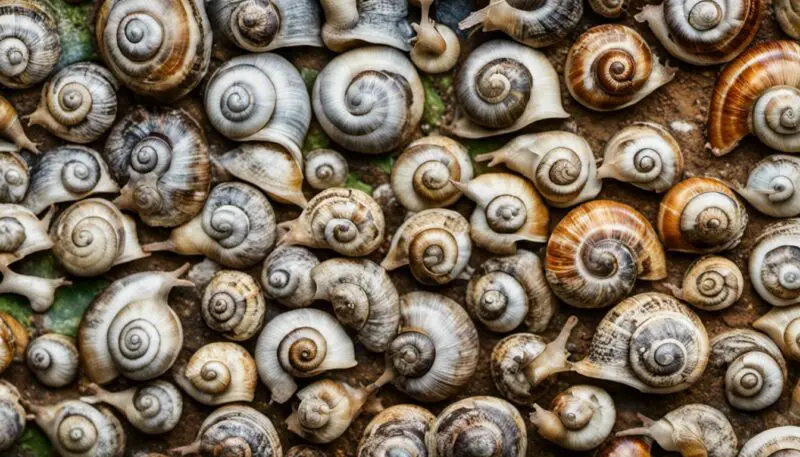
How can I effectively get rid of snails around my house?
To effectively get rid of snails around your house, you can try hand-picking them during the early morning or evening when they are most active, using snail traps, or spreading diatomaceous earth or crushed eggshells around your plants to deter them.
Another option is using snail baits that contain iron phosphate, which is a natural compound less harmful to the environment and other animals.
What attracts snails to my home?
Snails are attracted to your home due to several factors, such as the presence of moisture, food sources like plants, and shelter from predators. They tend to be drawn to damp areas, and certain plants may attract them more, such as hostas and lettuce source.
How can I prevent snails from climbing my house?
To prevent snails from climbing your house, you can create barriers on the walls using copper tape or applying petroleum jelly along the base of the walls. Maintaining a clean, well-trimmed yard and removing potential hiding spots for snails, such as debris or wooden planks, may also help deter them from your home.
Are there plants that repel snails?
Indeed, some plants are known to repel snails due to their strong scent or unpalatable taste. Examples include lavender, rosemary, mint, and sage. Planting these plants around your garden or house can help keep snails at bay.
Can vinegar be used to eliminate snails?
Vinegar can be used as a natural snail control method. When sprayed directly on snails, it can dissolve their mucus, causing them to dehydrate and die. However, care must be taken not to spray vinegar on your plants or soil, as it could harm them or alter the soil pH.
What damage do snails cause to homes and gardens?
Snails can cause damage to homes and gardens by feeding on a variety of plants, including vegetables, flowers, and turfgrass source. They may leave irregular holes in the leaves or chew on the edges. Furthermore, snails can reproduce quickly, which may lead to an infestation if not controlled in a timely manner.

![Do Snails Change Shells? [Full Guide]](https://allourcreatures.com/wp-content/uploads/2021/11/snails-and-shell-768x511.jpg)
